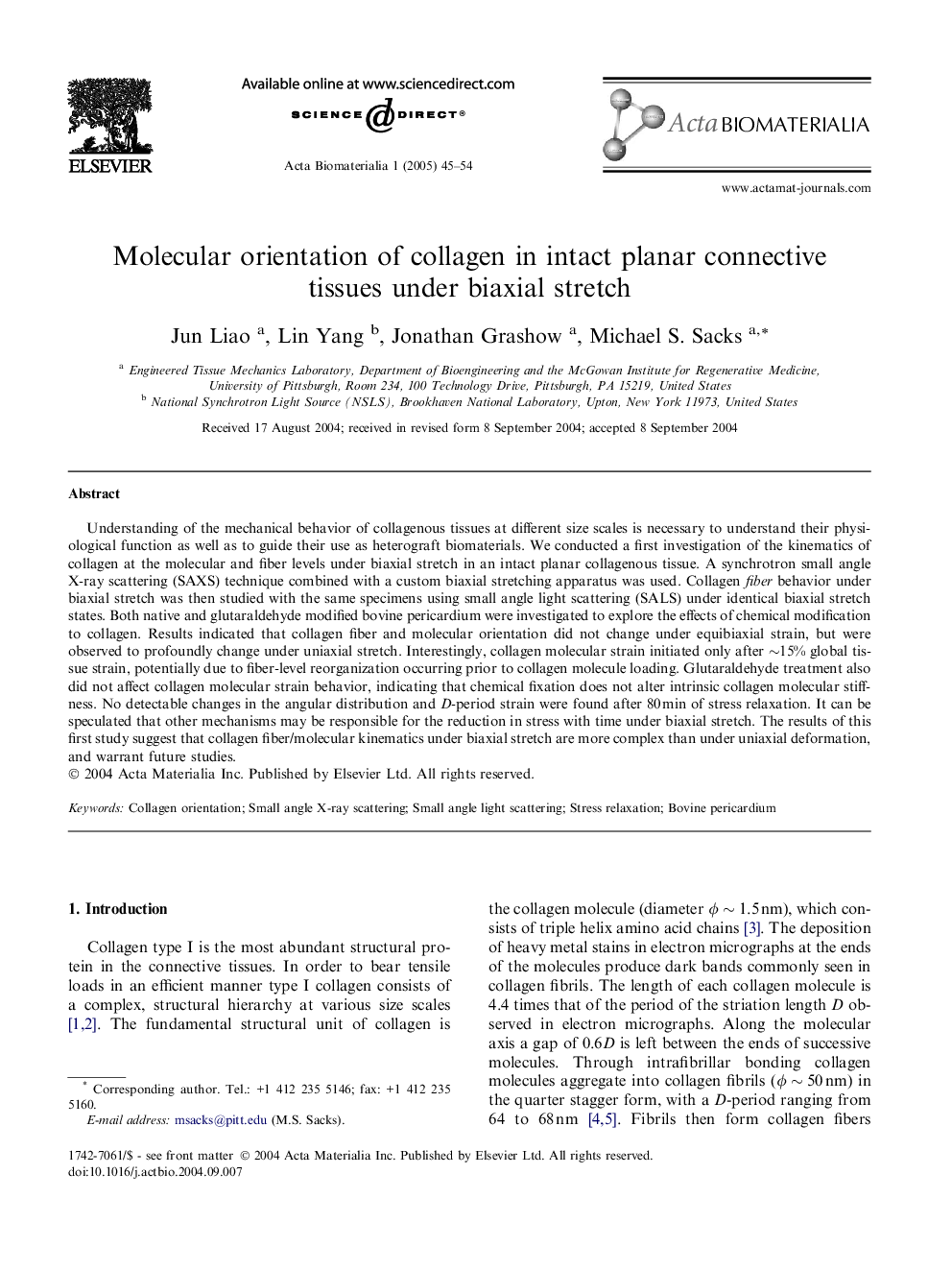| Article ID | Journal | Published Year | Pages | File Type |
|---|---|---|---|---|
| 10160437 | Acta Biomaterialia | 2005 | 10 Pages |
Abstract
Understanding of the mechanical behavior of collagenous tissues at different size scales is necessary to understand their physiological function as well as to guide their use as heterograft biomaterials. We conducted a first investigation of the kinematics of collagen at the molecular and fiber levels under biaxial stretch in an intact planar collagenous tissue. A synchrotron small angle X-ray scattering (SAXS) technique combined with a custom biaxial stretching apparatus was used. Collagen fiber behavior under biaxial stretch was then studied with the same specimens using small angle light scattering (SALS) under identical biaxial stretch states. Both native and glutaraldehyde modified bovine pericardium were investigated to explore the effects of chemical modification to collagen. Results indicated that collagen fiber and molecular orientation did not change under equibiaxial strain, but were observed to profoundly change under uniaxial stretch. Interestingly, collagen molecular strain initiated only after â¼15% global tissue strain, potentially due to fiber-level reorganization occurring prior to collagen molecule loading. Glutaraldehyde treatment also did not affect collagen molecular strain behavior, indicating that chemical fixation does not alter intrinsic collagen molecular stiffness. No detectable changes in the angular distribution and D-period strain were found after 80Â min of stress relaxation. It can be speculated that other mechanisms may be responsible for the reduction in stress with time under biaxial stretch. The results of this first study suggest that collagen fiber/molecular kinematics under biaxial stretch are more complex than under uniaxial deformation, and warrant future studies.
Keywords
Related Topics
Physical Sciences and Engineering
Chemical Engineering
Bioengineering
Authors
Jun Liao, Lin Yang, Jonathan Grashow, Michael S. Sacks,
